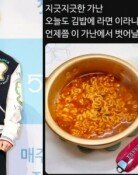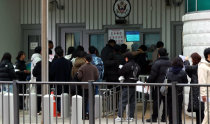Election Campaign, Too Much about Images
Election Campaign, Too Much about Images
Posted December. 11, 2002 22:35,
The election campaign this year has shifted its focus from large congregations to media `images.` But this change seems to come at a price well-packaged images but little substance.
˝The election campaign puts much focus on TV and mass media, and political parties are rolling out good-man images of candidates,˝ experts point out. ˝But they are mostly appealing to emotion rather than rational thinking of voters. ˝
▽Image Campaign
`Roh Moo-hyuns tears, a TV ad run by the millennium democratic party, is a black-and-white film in which Roh appears shedding tears following the scenes from the inter-Korean friendly soccer match. The close-up shot is designed to effectively touch the heart of viewers. In another ad, Roh plays guitar.
˝The black-and-white images are reminiscent of the so-called 386 generation, and the guitar playing reminds people of the good-man president images from the movie `President Playing Piano,˝ said media experts.
Roh, who has been considered radical, now appears wearing warm smiles in every poster and pamphlet.
The Grand National Party is seeking to highlight Lees `comfortable and reliable` images. It is now rolling out over the Internet a cartoon character of Lee in hip-hop looks.
˝The use of character represents a deliberate strategy aimed to create better-than-real images,˝ experts explain.
Lee appears in a photo essay comprising some 20 cuts talking with young students and women. ˝They are featuring young people to offset the age of the candidate,˝ some experts pointed out.
▽Little Substance
The media campaign is aimed at `cost-saving high-efficient politics interacting with voters.` ˝People might get absorbed in made-up images of TV ads,˝ said Park Chang-hee, professor of Media Advertising at Sungshil University. ˝Political parties are so well aware of this fact that they seem put too much focus on creating images. ˝
˝Voters need to be more critical of candidates so as not to fall into the trap of image campaign,˝ warned Ryu Han-ho, professor of Media Advertising at Gwangju University.
According to the Central Election Commission on Dec. 9, 82 interviews and discussions with candidates have so far been aired via terrestrial broadcasters and cable stations.
Political parties, on their parts, have allocated more than one third of the total budget to media campaign and launched `image-making` taskforce teams.
Sung-Kyu Kim kimsk@donga.com







